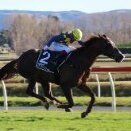-
Available Subscriptions
BOAY Racing News
39,344 topics in this forum
-
- Journalists
One Kiss stakes her claim for higher honours
-
- Journalists
- 0 replies
- 111 views
-
-
- Journalists
- 0 replies
- 170 views
-
-
- Journalists
Today’s punting guide to Oamaru
-
- Journalists
- 0 replies
- 143 views
-
- Journalists
Smokin’ Romans snares Caulfield Cup berth
-
- Journalists
- 0 replies
- 142 views
-
-
- Journalists
- 0 replies
- 144 views
-
-
-
- Journalists
- 0 replies
- 177 views
-
-
- Journalists
Start to Hannon crucial
-
- Journalists
- 0 replies
- 131 views
-
-
- Journalists
- 0 replies
- 136 views
-
-
-
- Journalists
- 0 replies
- 157 views
-
-
- Journalists
One Kiss stakes her claim for higher honours
-
- Journalists
- 0 replies
- 129 views
-
-
- Journalists
- 0 replies
- 116 views
-
-
-
- Journalists
- 0 replies
- 120 views
-
-
-
- Journalists
- 0 replies
- 145 views
-
-
- Journalists
Wayne Davis to ride at Winton on Saturday
-
- Journalists
- 0 replies
- 131 views
-
-
- Journalists
- 0 replies
- 146 views
-
-
- Journalists
Pursell’s Million Dollar ‘Mac’
-
- Journalists
- 0 replies
- 259 views
-
- Journalists
Luckie’s star continues to shine
-
- Journalists
- 0 replies
- 144 views
-
- Journalists
Akuta – “can win..but not expecting him to”
-
- Journalists
- 0 replies
- 143 views
-
- Journalists
Williams, Williamson and Gray talk Oamaru
-
- Journalists
- 0 replies
- 197 views
-
- Journalists
Stella Splendida impresses on debut
-
- Journalists
- 0 replies
- 164 views
-
- Journalists
Kiwi-breds set to strike for Waller
-
- Journalists
- 0 replies
- 158 views
-
- Journalists
Phelan hoping to be jumping for joy
-
- Journalists
- 0 replies
- 165 views
-
- Journalists
Kiwi-breds to the fore at Geelong
-
- Journalists
- 0 replies
- 2.1k views
-
- Journalists
Miss Take ready for black-type test
-
- Journalists
- 0 replies
- 159 views
-
-
- Journalists
- 0 replies
- 189 views
-


